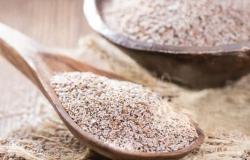Maruim mosquito is one of the transmitters of oropouche fever
| Photo: Disclosure / Fiocruz
The State Department of Health (Sesa) confirmed, this Tuesday (23), the circulation of Oropouche Fever in Espírito Santo. According to the folder, eight cases of the disease were identified in samples analyzed by the Central Public Health Laboratory of Espírito Santo (Lacen/ES).
This month of April, to date, 1,872 samples have been analyzed using RT-PCR tests, sent by cities in Espírito Santo.
According to Sesa, the cases confirmed in five samples sent by:
- Colatina (five samples)
- Sooretama (a sample)
- Bananal River (a sample)
- Vitória (a sample)
Although eight positive cases have been identified, positivity for Oropouche Fever is still low (0.42%).
“It is a disease that is not lethal, so far, and has symptoms very similar to those of dengue – fever, body pain and joint pain. Laboratory diagnosis is essential for effective monitoring of cases, as well as municipal epidemiological surveillance actions to monitor the situation”, highlighted the Undersecretary of State for Health Surveillance, Orlei Cardoso.
How identification is made
The identification of the virus is part of a molecular analysis strategy for arboviruses that are tested simultaneously from a single sample, through RT-PCR carried out by Lacen/ES, and is only possible due to investments made in the laboratory’s technological park in the last years.
“Five years ago, this type of procedure could take many weeks, as they were only carried out outside the State, requiring sending to reference laboratories”, highlighted the director of Lacen, Rodrigo Rodrigues.
Samples with suspected arboviruses, normally sent for detection of Zika (Z), Dengue (D), or Chikungunya (C), are initially tested using the RT-PCR technique, the same used for diagnosing Covid-19 and others. respiratory viruses. If the tested samples are considered negative for Zika (Z), Dengue (D) or Chikungunya (C), ZDC protocol, the sample is then subjected to a second round of RT-PCR, in which they are tested for the presence of the following arboviruses : Mayaro, Oropouche and Nile Fever.
The eight samples identified by Lacen/ES went through the same ZDC protocol, being considered negative and then retested for the presence of the other arboviruses. “In addition, because there are sample aliquots at Lacen/ES, we can carry out a characterization of these viruses through genetic sequencing”, explained Rodrigues.
He adds: “the result of this investigation proves that laboratory molecular surveillance work for arboviruses is one of the most important actions in combating dengue, as it allows mapping, in real time, the circulation of different lineages of viruses, early detection of new viruses and a better understanding of the routes of introduction of these viruses in the State”.
What is Oropouche Fever
Oropouche Fever is a disease caused by an arbovirus (virus transmitted by arthropods) of the genus Orthobunyavirus, of the Peribunyaviridae family.
Orthobunyavirus oropoucheense (OROV) was isolated for the first time in Brazil in 1960, from a blood sample from a sloth (Bradypus tridactylus) captured during the construction of the Belém-Brasília highway. Since then, isolated cases and outbreaks have been reported in Brazil, mainly in states in the Amazon region.
The vector of Oropouche fever is a very small insect, measuring one to three millimeters, popularly known as “maruim” or “powderfly”. Its color varies from gray to dark brown and it has short, wide wings. It is generally associated with regions with greater humidity and the presence of organic matter.
Among the characteristics of OROV, its high potential for transmission and dissemination stands out, with the capacity to cause outbreaks and epidemics in urban areas. There is no vaccine and specific treatment available.
How transmission occurs
There are two transmission cycles described: wild and urban. In the sylvan cycle, sloths and non-human primates (and possibly wild birds and rodents) act as hosts. There are records of OROV isolation in some species of mosquitoes, such as Coquillettidia venezuelensis and Aedes serratus.
However, the supposed primary vector is Culicoides paraensis (Diptera: Ceratopogonidae), known as maruim or sandfly. In the urban cycle, man is the main host, and the primary vector is also C. paraensis. Eventually, the Culex quinquefasciatus mosquito can transmit the virus in urban environments.
To date, there is no evidence of direct person-to-person transmission. After infection, the virus remains in the blood of infected individuals for 2-5 days after the first symptoms begin. The intrinsic incubation period of the virus (in humans) can vary between 3 and 8 days after infection by the vector bite.
Symptoms
The clinical manifestations of OROV infection are similar to the clinical picture of other arboviruses, such as dengue, chikungunya and yellow fever, although the ecoepidemiological aspects of these arboviruses are different.
Acute cases of OROV evolve with sudden onset fever, headache, myalgia (muscle pain) and arthralgia (joint pain). Other symptoms such as dizziness, retro-ocular pain, chills, photophobia, nausea and vomiting are also reported.
Cases involving the central nervous system (for example, aseptic meningitis and meningoencephalitis), especially in immunocompromised patients, and with hemorrhagic manifestations (petechiae, epistaxis, gingivorragia) may occur.
Some patients may experience a relapse, with the same symptoms or just fever, headache and myalgia 1 to 2 weeks after the initial manifestations. Symptoms last from 2 to 7 days, with a benign evolution and no sequelae, even in the most severe cases. There are no reports of deaths associated with OROV infection.
Vector bites tend to cause a lot of discomfort and allergic reactions. There is no specific treatment for the disease. Patients must remain at rest, with symptomatic treatment and medical monitoring.
How to prevent
The habitat in which the vector develops varies from species to species. Generally speaking, three elements are necessary: humidity, shade and organic matter.
Therefore, measures to prevent Oropouche fever involve mechanical management of the environment and individual protection measures. In mechanical management, it is necessary to keep trees and bushes pruned, in order to increase sunlight on the soil, remove excess organic matter (leaves, fruits, etc.); keep vacant land free of weeds, depending on the situation, and planting grass can help keep the maruin population under control; and keep animal shelters (poultry, pigs, cattle and others) always clean.
Regarding individual protection measures, the use of repellents and long clothing can help reduce bites. The use of screens on doors and windows, as physical barriers, recommended in some cases, does not have much effect due to the need for these screens to have a very small weight, and this fact ends up reducing air circulation inside properties.
RELATED TOPICS:

HEALTH
Health centers in Cariacica offer flu vaccinations without an appointment

HEALTH
High concentration of bird flu virus detected in raw milk in the USA

SPEAK DOCTOR
Pneumonia can be silent, explains doctor

HEALTH
The next pandemic must be caused by a variant of the virus that causes the flu
Tags: cities registered cases Oropouche Fever Online Tribune
--





